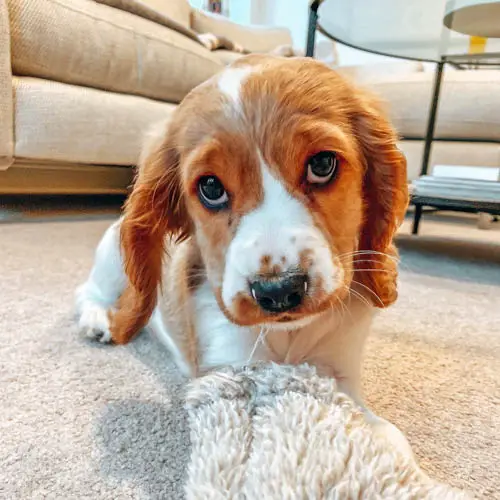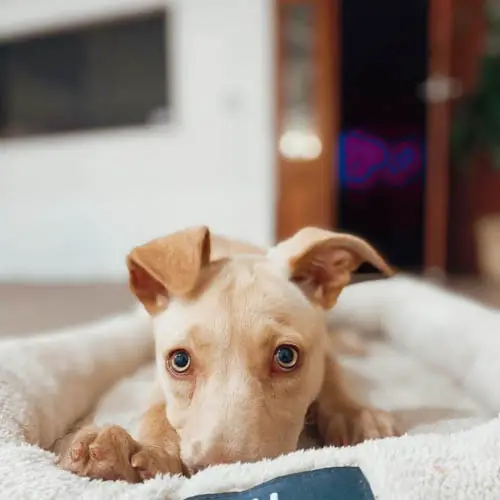Dogs known for their loyalty and faith in their masters possess this separation emotion and feel a lot more than we can think.
Numerous times, it is heard that after the owner’s demise, their pet dog never stopped to wait for them, or the dog became less active, or the dog never left roam around the grave of their masters.
The love and affection they get is the only precious thing they have; they want your attention and want you to take care of them.
This feeling gives birth to separation anxiety in dogs and other pets.
How can separation anxiety be defined?

Separation is not a very new or raw term for analyzing the same from the psychological perspective. This particular trait lives in all organisms, be it human beings or any animal, a dog.
The feeling of belonging and being loved is such that it makes every organism feel special and cared for. Also, when we look deeply into the behavioral attitude of dogs, they are super attached to the family members they are catered in.
The guardians and the owners of the dogs furnish them with immense love and care; they feel blessed and gradually get very close to them.
Dogs have this specialty that they give so much love to their owners that they, in some time, become like a family member in the house they live in. Dogs always crave love, tenderness, and warmth.
People who pet dogs know about this in much detail that all changes are seen in the activities of their pet dogs when they do not give them love and attention.
They become restless and try to get their amount of love and care from their owners. When dogs are forcefully separated from their owners or guardians, they become very aggressive and upset.
This is defined as separation anxiety in dogs in detail. There are times when any dog has to be separated or kept away from the house, and he has been catered in for years now.
He will show signs of dismay, aggression, and unacceptance to portray that he is not happy and is suffering from anxiety about being separated from his owners and guardians.

Several dogs become very aggressive and violent during this whole procedure, and they indulge in various extreme escape methods. Their escape methods can be very daunting at times and can result in self-harm and destruction of household items, etc.
In such cases, it is recommended to keep the doors and the windows closed to ensure that the dogs do not try and escape from there and have to face certain dangers.
Separation anxiety is a very bad and cruel thing to a dog.
Dogs are very possessive about their owners, and when they are separated from them, they become very upset and get super aggressive.
They will show major changes in their behavior; vocalization becomes their main sign of aggression and distress. The name says everything. At whatever point you’re nowhere to be found, your canine is on edge, terrified or anxious.
The seriousness of canine nervousness can shift from slight disquiet to out-and-tension assaults in increasingly extreme cases.
Each canine is unique; however, most fur balls adapt to detachment uneasiness by being ruinous or present trademark physical side effects.
This is why individuals regularly botch the absence of legitimate preparation or even some clinical issues for this pooch conduct issue.
This is why separation anxiety in dogs is taken as a very serious issue as it harms their health and proves to be very unpleasant for the pets. The owners and the guardians need to take care of this thing and be considerate.
Symptoms of separation anxiety in dogs

When a dog suffers from separation anxiety, they show several symptoms, curtailing the situation. Various behavioral changes can be noticed in the activities of the pet dogs as well.
They start behaving indifferently in various situations, and it can be easily inferred that there is something wrong with the health of their pets.
As a medical issue, anxiety is hazardous for human beings and in animals as well. Several dysfunctions start occurring in the physical as well as mental health. Anxiety attacks are worst in the case of animals as they cannot even express themselves.
Hence, this is when the dogs’ owners or guardians need to take control and start monitoring their pets. If they witness any signs of such disorders, they should at once take them to vets to treat separation anxiety in dogs.
Below are symptoms listed that can show that your pet is suffering from anxiety issues and needs immense care.
Consistent yelping, wailing, crying When dogs start crying and yelling for no known reason suddenly, it is a sign that something wrong is going on within them. It can either be the disorders in their physical or mental health.
- Extraordinary pacing and fretfulness
If your pet is suffering from anxiety issues, there might be some weird and sudden expressions of irritation.
This can be noticed by their unfriendly behavior, such as not responding to the owners, barking on family members, hiding alone, being dull the whole day.
- Inordinate salivation and gasping.
Excessive salivation is also a sign of poor health in dogs. It is seen that dogs salivate the most when they are hungry or their food is kept before them.

If they start excessive gasping or drooling in a huge amount, it might signify that they are facing some issues.
- Anxiety, scratching entryways or windows
When your dog suffers from separation anxiety, he will also be insecure and anxious about you leaving the house, even for a few hours. He will start getting anxious when he notices that you are ready to leave the house.
This is when he will start scratching the entryways such as doors, windows, etc. This, too, indicates severe separation anxiety issues in them.
- Getting away from a room or case
When your dog starts getting away from the room or the area where he used to be and starts coming behind you everywhere wherever you go, he feels anxious when he cannot see his guardian in front of his eyes.
- Slobbering
The saliva usually is inside and on the corners of the mouth boundary of the animals and when dogs start slobbering and letting their saliva out of their mouth whenever they get anxious. These are also signs that your pet is suffering from anxiety.
- The devastation of property, pads, couches, and other furnishings, eating plants
Destroying certain objects and property is also one of the main changes that can be seen when a dog suffers from separation anxiety. He becomes restless and starts destroying things and creating hassle in the house.
- Peeing or pooping inside
Not indicating their owners or caretakers whenever they have to go and pee or expel is also an indication. Dogs become lazy and lethargic and do not wish to move outside the house.

- Biting stuff
Chewing or biting random stuff that comes there a way or whatever they find and sniff.
- Hopping through open as well as shut windows
Dogs begin hopping or jumping through the open doors if they see their owner leaving the house for a minute. They start getting restless and try to escape from the house.
- Overlooking food
Pets also start to avoid eating or taking their proper diet as they used to when they start getting anxiety attacks. There are cases where the pets stop eating food, become very dull, and are diagnosed with anxiety.
These are a few of the symptoms that can be shown by your pets as well if they will have any sort of disorder in their physical or mental health.
Just like a human, dogs need to maintain good mental health. This should be taken care of by their owners or guardians, who look after them. The separation anxiety in dogs and this issue needs to be looked after very nicely.
Which dogs suffer most from Separation Anxiety
Though separation anxiety in dogs can develop easily, here is a list of several breeds who suffer from the same at a much more severe level:
- German Shepherd
These puppies are working dogs and do best when a domain is genuinely and intellectually animating.
Taken off alone and exhausted, they can be upset. Like the retriever, this variety has likewise encountered some medical issues as of late, which means their personality makes them increasingly inclined to partition uneasiness.

- Australian Shepherd
This activity has been reared for grouping and is an extremely dynamic pooch that does best when at work. They have to remain dynamic and may endure tension when there’s nothing to do.
- Cocker Spaniels
These canines are buddy hounds and have been reproduced to appreciate investing heaps of energy with their human guardians. When you disregard them for longer periods, they may endure tension.
In general, this variety will be marginally progressively on edge when all is said and done and can create yapping and other tricky propensities.
- Labrador Retriever
This is a delightful and helpful canine; however, they have a late decline in well-being and demeanor, making them increasingly inclined to divide uneasiness and social difficulties.
Be that as it may, they can battle whenever left alone for extended periods because they are so social.
- Vizsla
Vizsla was chasing hounds and was reared to chase with their people. They are social and do inadequately when taken off alone with nothing to do. Time without physical activity and their kin family can prompt pain and nervousness.
- Toy breeds
This sort of poodle has a delicate personality and has been reared as a friend hound. They need time and love from their human family. When they don’t get it, they can experience the ill effects of huge division trouble.
How to manage separation anxiety in dogs?

Certain ways can be used to manage the problem of separation anxiety in dogs. A few of the tips are given below that can be followed by the owners or the caretakers of dogs.
- Switch up the leaving signals start using different methods to leave the house. Avoid leaving in front of your pet.
- Try to avoid panicking when returning home, don’t be overexcited.
- Leave your TV or radio on.
- Gradually increment the time you spend out of the home.
- Rest without your canine in your bed
- Continue encouraging things and provide them with toys, etc., to keep them busy.
- Try not to give excessive consideration to any harm they do when you are.
- Investigate exercises and intelligent pet toys that keep them engaged, diverted, and vitality-centered while you are away.
- Take your puppy on everyday strolls and excursions along with various courses and attempt to have them communicate with different canines.
- Make a positive relationship with your canine when you go out.
- Get a pet sitter or pooch walker, or ask a relative or companion to watch your canine whenever you need to go.
- If you need to leave your puppy for quite a while, take them to a doggy childcare administration or canine lodging.
- Ensure your canine gets at any rate 30 minutes to an hour of the activity or oxygen-consuming action (swimming, running, etc.) consistently.
- Recruit a canine mentor or behaviorist to assist you with comprehension and train your dog.
- If you have more than one canine and don’t know which one of them is restless, give a Pet cube to see a shot and screen their uneasiness while you’re gone.
- Change your timetable – stun the time you surrender for work by over 15 minutes one way or the other every day and return on different occasions. Fly in during your mid-day break every so often – anything to separate any unfortunate propensities and sentiments.
- Leave them something to bite on – for example, a toy rather than your new shoes.
- Leave the radio or TV turned on.
- Ask your vet or companions with pets who have managed comparable issues that have worked for them.
Above are certain tips and tricks that can be used to keep the pets engaged while you are away or to help them deal with loneliness for the time when you are not around them.
Is there any medication for separation anxiety in dogs as well?
Yes, certain medicines are prescribed by the vets for the dogs to take care of their anxiety. A few of them are:
- Amitriptyline.
- Dexmedetomidine (Sileo)
- Diazepam (Valium)
- Buspirone.
- Clomipramine (Clomicalm)
- Alprazolam (Xanax)
- Fluoxetine (Reconcile or Prozac)
- Lorazepam
What methods should not be followed to treat separation anxiety in dogs?

- Discipline
Most pooch mentors say it isn’t powerful for treating division uneasiness and can even exacerbate things.
- Getting Another dog
Getting your canine a buddy isn’t a fix-all and may twofold your issues. Talk with a behaviorist or coach before assuming liability for another canine.
- Shout or make an object
Negative consideration is still a consideration. The exact opposite thing you have to do is cause your puppy to accept that being dangerous is the stuff to be at the center of attention.
- Submission preparing
While formal preparation is constantly a smart thought, your puppy’s partition tension probably won’t result from rebellion or the absence of preparation.
Thus, separation anxiety in dogs is a real thing and needs to be dealt with great patience and the help of the vets. Restless conduct is simply conducted. It looks horrendous, yet it can’t go on for eternity.
Partition nervousness can be treated with the correct technique, and discovering one is simply an experimentation issue.
Nonetheless, if your canine’s separation anxiety issue is extraordinary, look for proficient assistance and make sure that it starts soothing within a period.





